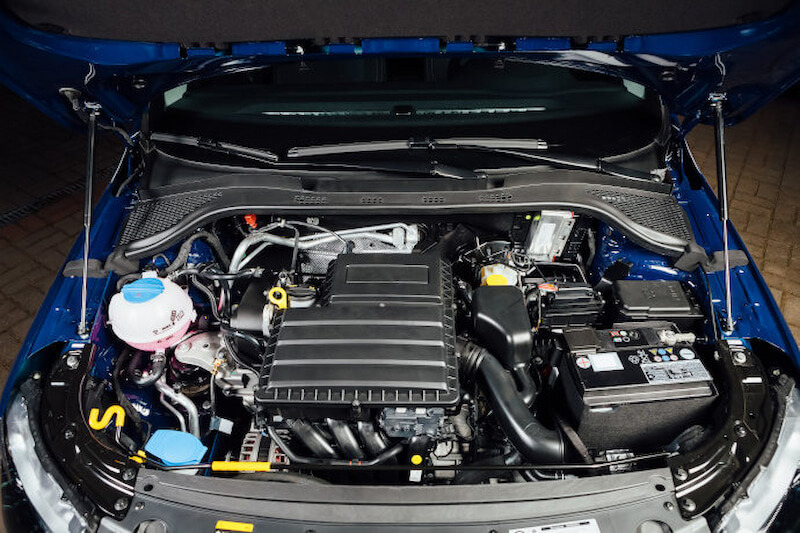When shopping for car parts, it’s the minor details that often get overlooked. Some will bring better performance, others will last longer, and some vehicle parts just make daily driving more pleasurable. Take the case for the humble car lift support.
This is what lines car hoods, trunks, and rear windows and makes opening and closing them much easier, faster, and smoother. These simple parts go by a few names (depending on where you’re from) and can be found in a range of different applications, from tool boxes, attic doors, kitchen cupboards and cabinets, office chairs, and many commercial and industrial applications where the lifting and lowering of heavy objects need to be done in a smooth and controlled way.
The Basics of a Car Lift Support

Gas springs, gas struts, and lift supports are basically the same thing. They are rods filled with pressurised gas and lubricant and used in lifting, positioning, and lowering horizontally hinged doors, hatches, lids, covers, and car hoods. With the use of clips or screws, they are fastened directly to the vehicle’s body or frame.
On the market, car lift supports are available in two basic styles – the cheap and simple pneumatic style powered by nitrogen or compressed air (and needing a simple push or pull) and the electrically-operated style that uses the 12-volt power from the car battery and electric motors to operate. The latter is a recent standard addition to tailgates and is priced much higher.
How Does It Work?

Gas struts are sealed systems consisting of an outer steel cylinder filled with (nitrogen) gas under pressure, a piston rod at the end of which a piston is anchored, and sealed channels through which the gases pass in addition to oil that lubricates the parts. The gas in the strut compresses as the rod pushes into the tube, reducing the volume of accessible gas.
Suggestion: Top New Cars With Google Built-In Features In The USA – Most Popular Vehicles.
When compressed, the gas produces a force, acting like a spring. This force is calibrated in proportion to the weight of the vehicle parts that are to be lifted or lowered with variations in gas pressure, rod stroke, oil quantity, cylinder diameters, and channel designs, ensuring smooth operation.
More on the Different Types
Car gas struts can come with fixed or adjustable compression. Adjustable lift supports allow the user to reduce the volume and pressure of the gas inside the cylinder with valves or vents. This means that the force required to move the attached car part can be adjusted with the use of progressively less force.
To make venting possible, adjustable gas springs are usually supplied with the maximum internal pressure and can be degassed as needed. These are a good choice if you want something simple that can handle different car parts, albeit with slight adjustments.
More thought is needed when selecting car gas struts in the standard fixed type, as these will be supplied with constant pressure and spring force, so they may not be suitable across all car parts. As mentioned, you’ll need struts with large-diameter rods for heavier car parts.
Popular For You: 7 Top Rated Cold Air Intakes For C6 Corvette Review In 2023 With Buyers Guide.
Other design features allow different ga struts to be used for different purposes. Those with locking mechanisms can be locked along any point of the stroke length by an internal piston arrangement actuated and locked in place by a button at the end of the rod. These can be further divided into rigid or spring-blocking mechs, with rigid struts staying put while the latter allows for slight movement when under load.
Where Can a Lift Support be Used?

While hood and trunk lids are the most common vehicle parts to make good use of it, other vehicle parts can also benefit. For SUVs, there are supports that lift or lower rear tailgates and back glass windows, either as standard fitment that came with the car or as an aftermarket addition. The same applies to lifting heavy hatches in hatchbacks. Less obvious instances are variants used in lifting convertible top covers and truck bed storage boxes.
The Benefits
The obvious reason for using gas springs is that they are an easy and dependable way of opening and closing trunks, hoods, tailgates, and hatches. The sealed construction means they are self-contained and require no maintenance. And they won’t wear out any time soon when compared to the likes of traditional coil springs, with cylinders protecting the rods, pistons, and channels.
Also Read: 9 Best Car Interior Light Strips You Need To Check Out In 2023.
Springs can be optioned with very high force ranges, meaning that you’ll find lift support for just about any possible application you can think of. And they’re rated to last, with most exceeding 100,000 lifting and lowering cycles. They can also be optioned in a range of colors and materials (stainless steel variants are popular and long-lasting).
Additional features like locking mechanisms increase their ease of use and versatility. And they’re quick and simple to install. The best part though is that they’re extremely cheap to buy and well worth their price in terms of the functionality they provide.
Choosing the Right Lift Support for Your Car

Gas springs can fail and lose the ability to support the vehicle part over time. This is in poorly engineered units that may have come with the car.
If you suspect a damaged spring, chances are it will take longer to open or close, might need a bit more effort doing so, or sag and be unable to hold the vehicle part in position. Other signs are damaged or broken fittings, and oil leaking from the seals. Factors like temperature variations and prolonged exposure to water and liquids will wear springs over the long term.
Choosing a replacement is fairly straightforward. Gas springs need to be with the right loading force to hold up the supported vehicle part, extend to the required distance and compress to the right length in order to fit. It also needs to be of the right type for the application.
Struts makers make things simpler by providing a range of gas springs to suit the application and vehicle. Go by car make, model, and year and where you’ll be fitting the gas spring. And if you’re installing gas springs for the first time, such as in vehicles with modified, added, or lightened body parts, suppliers will help you to get what you need.
Discover more from Locar Deals
Subscribe to get the latest posts to your email.






